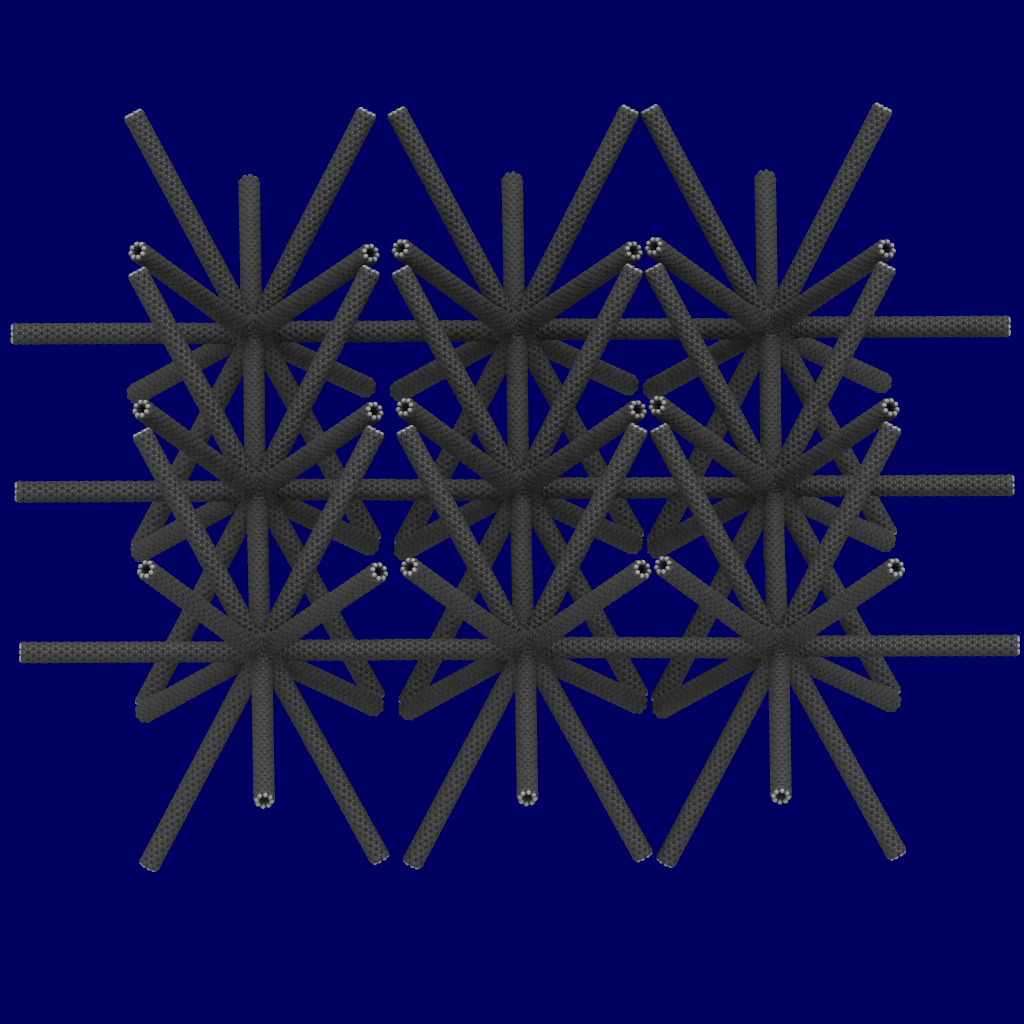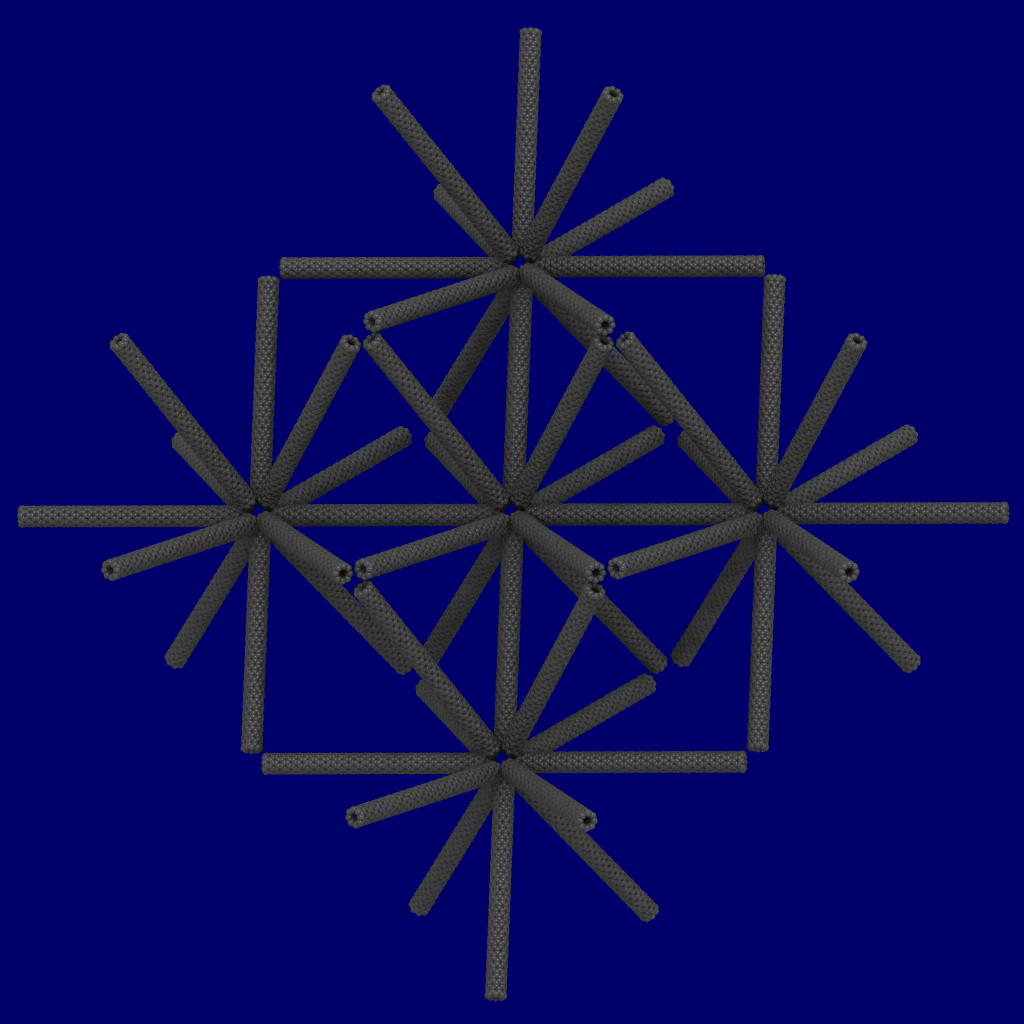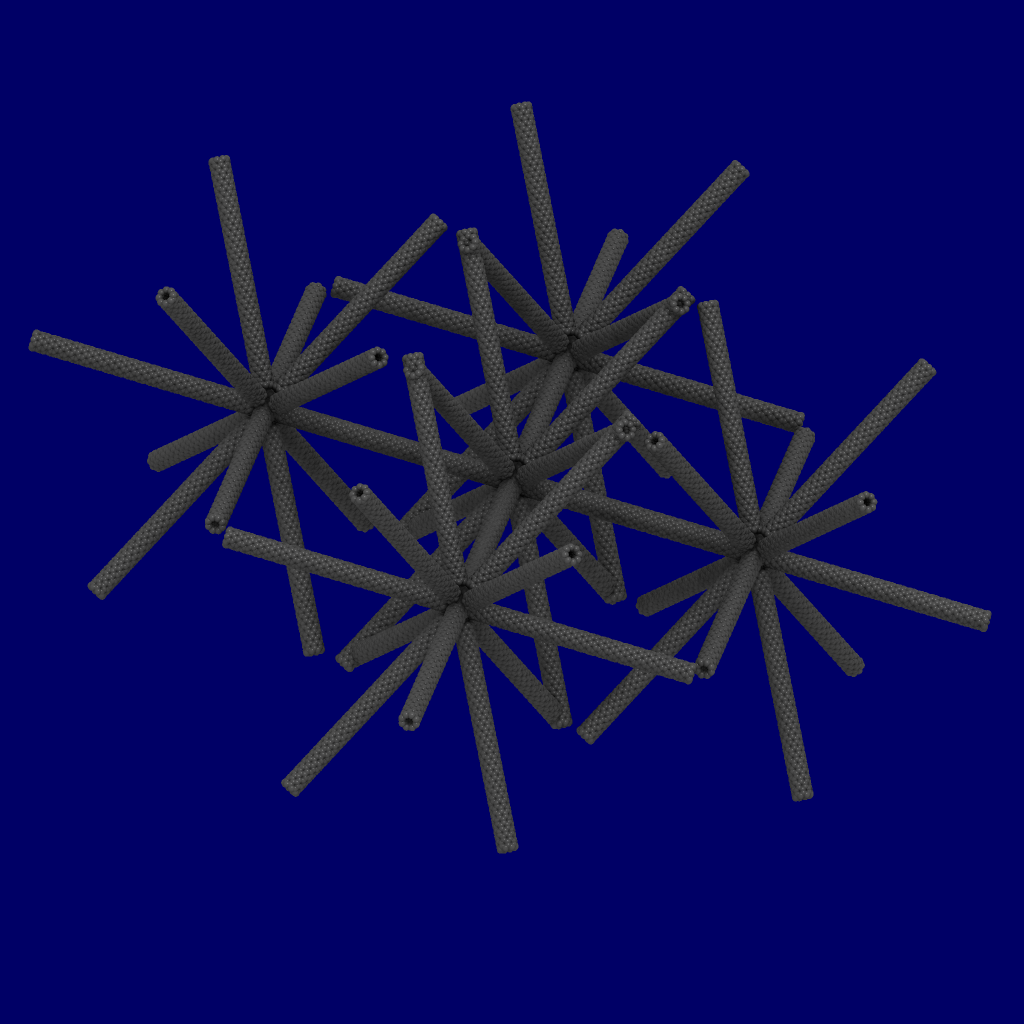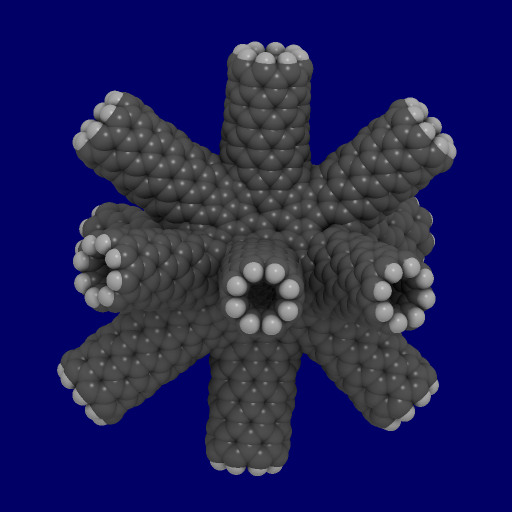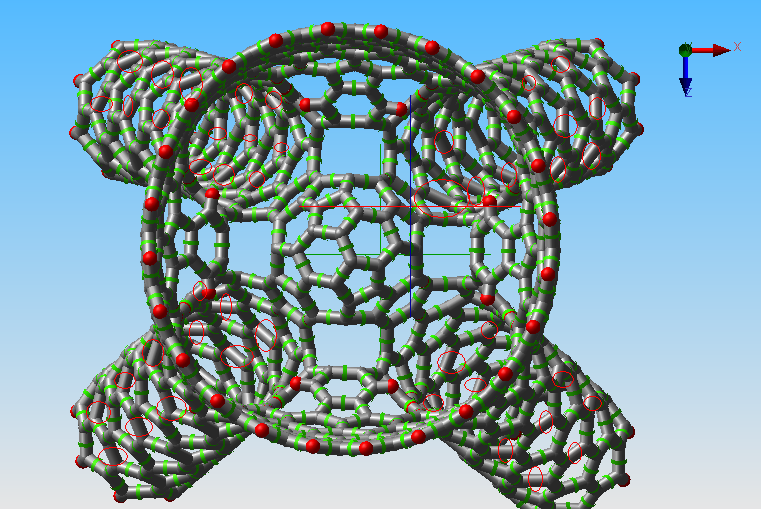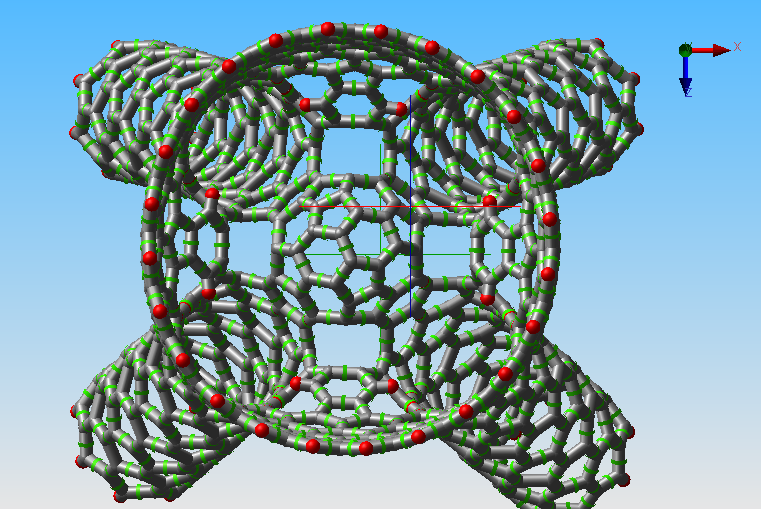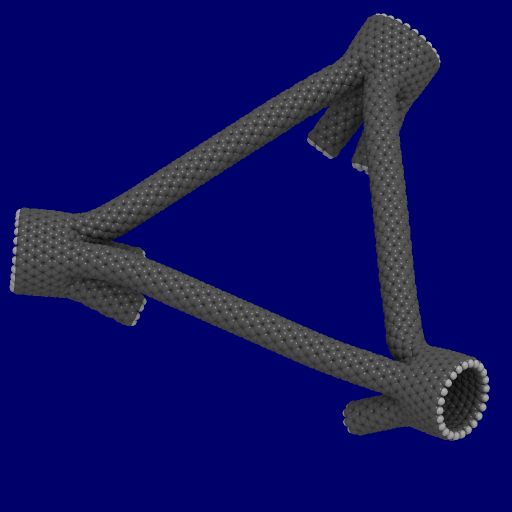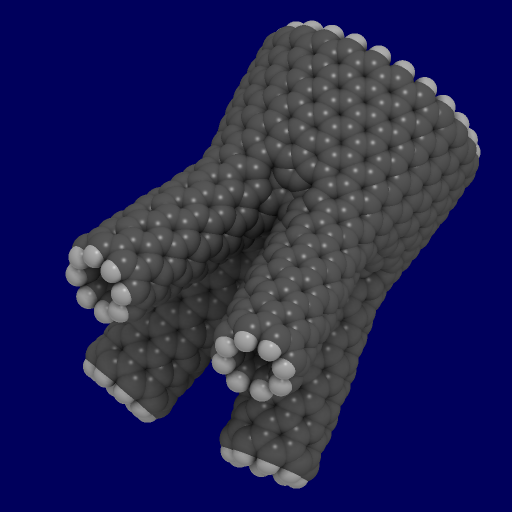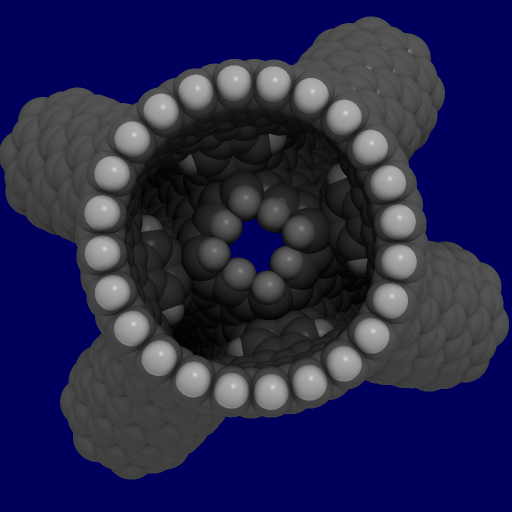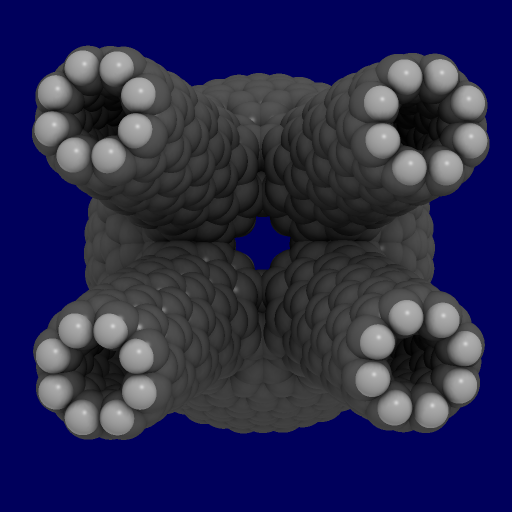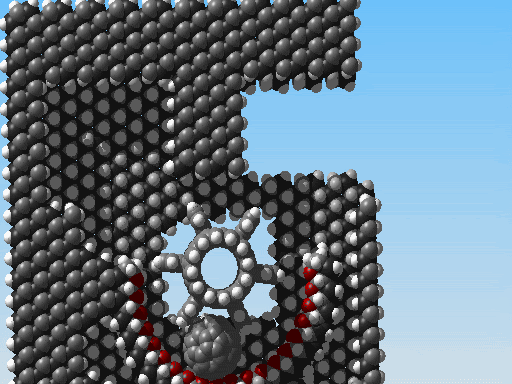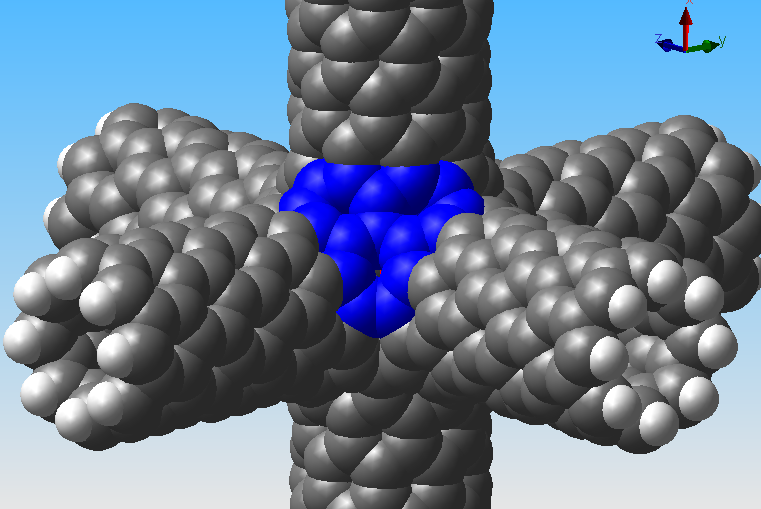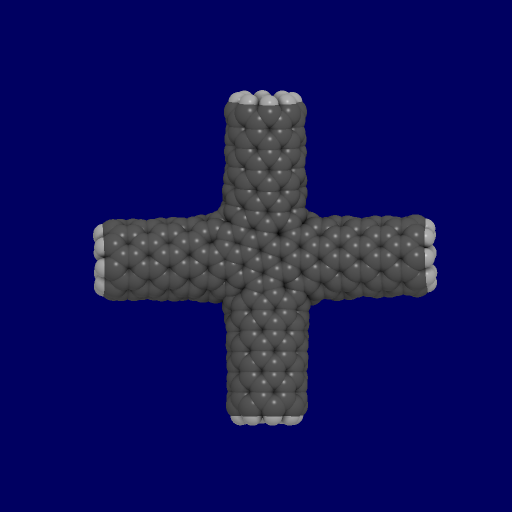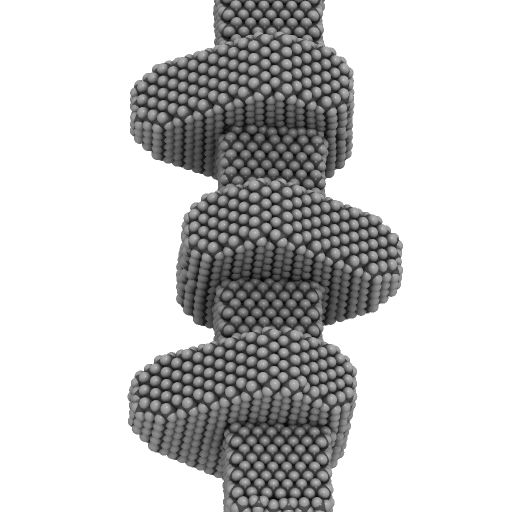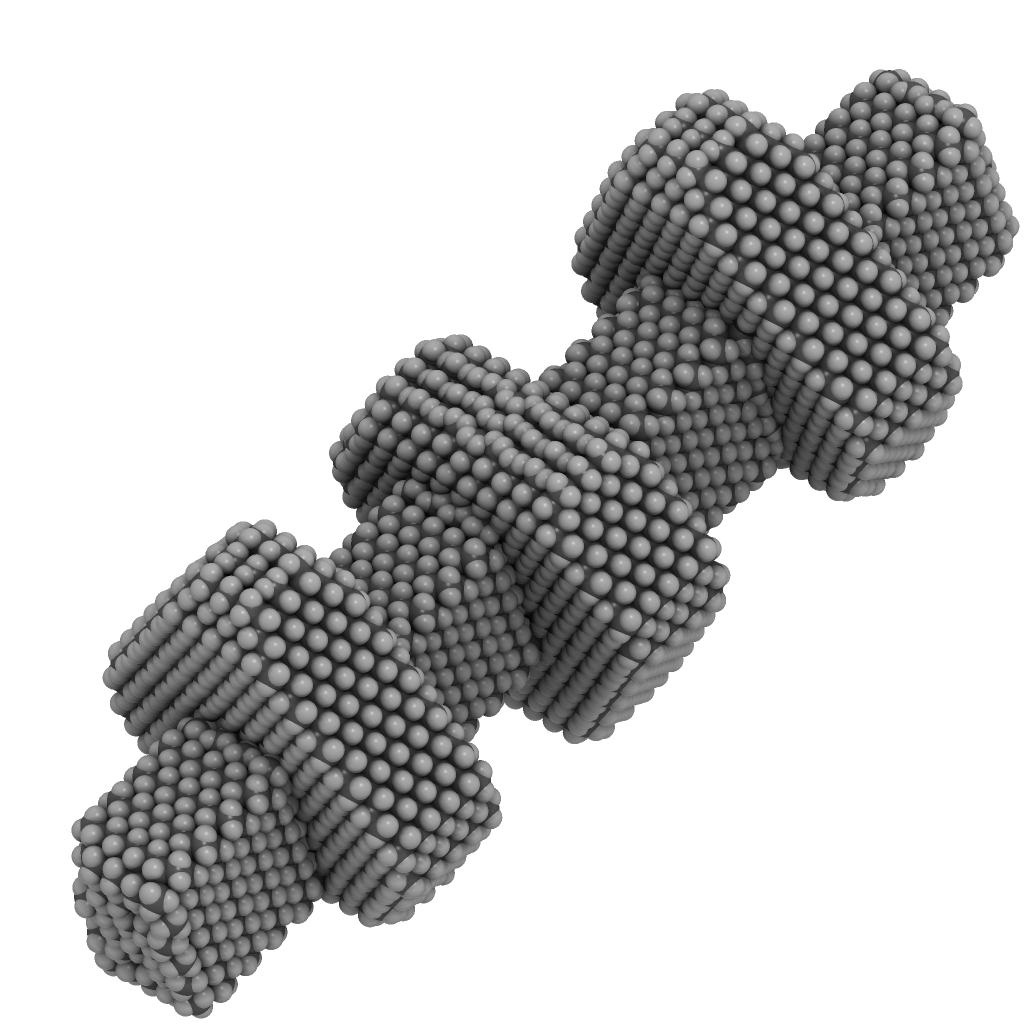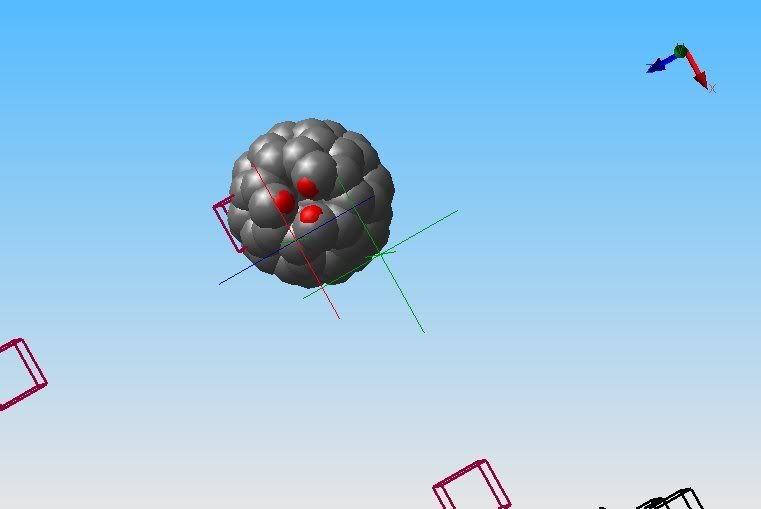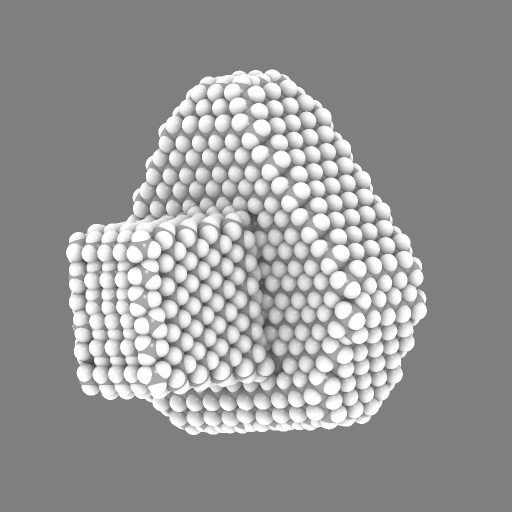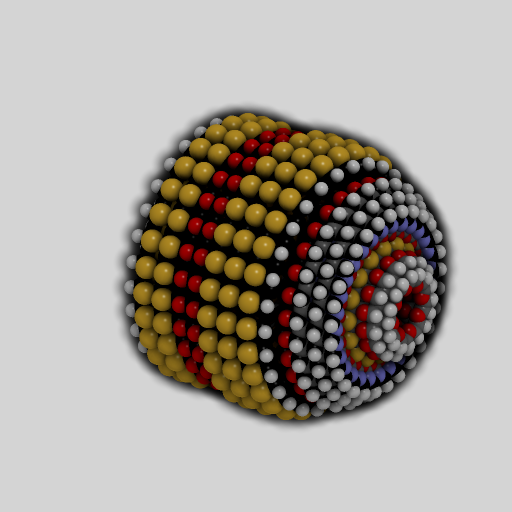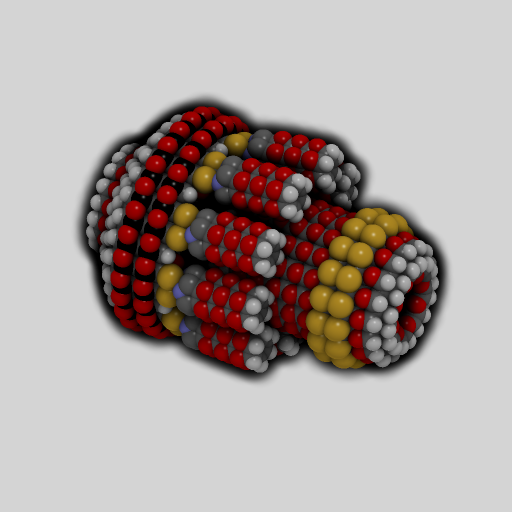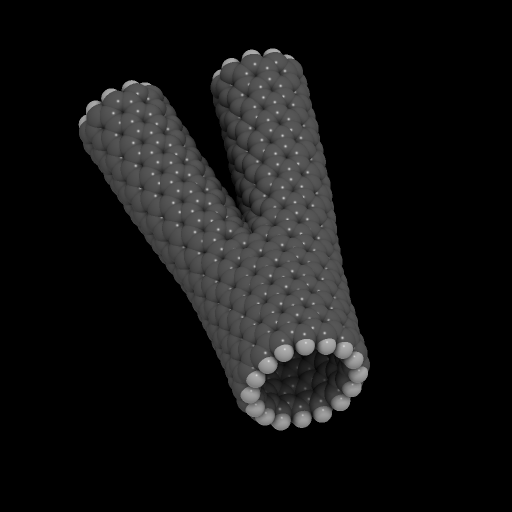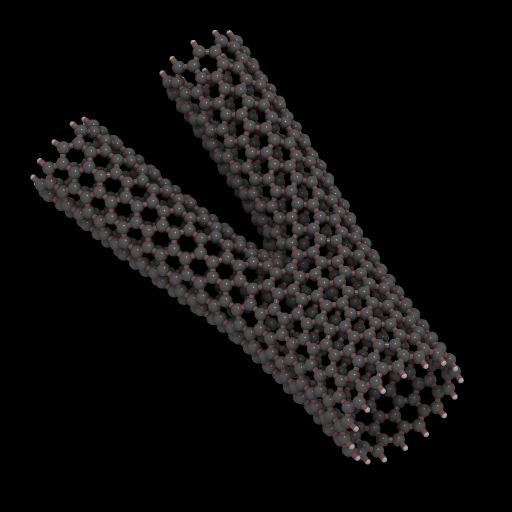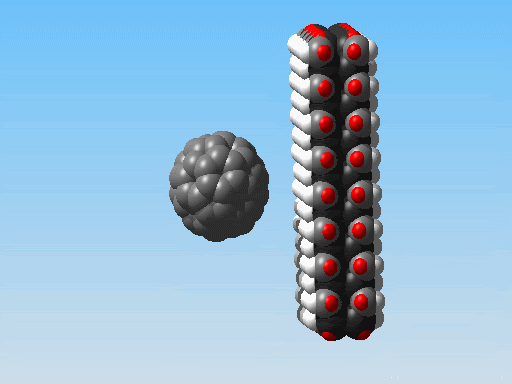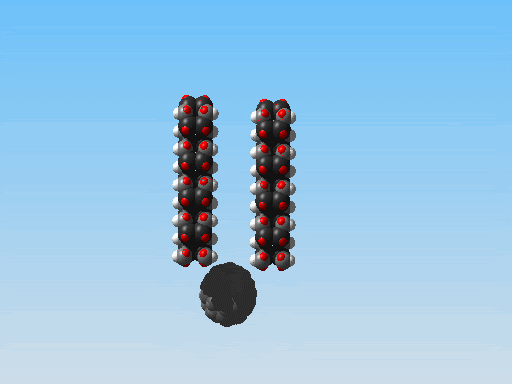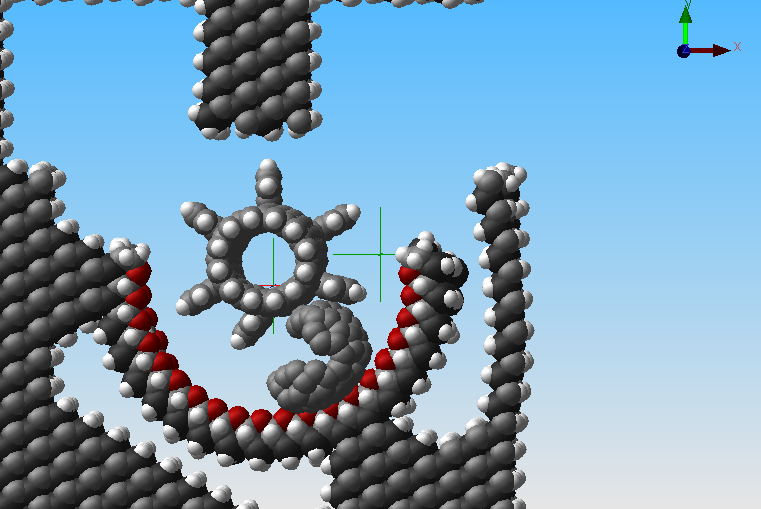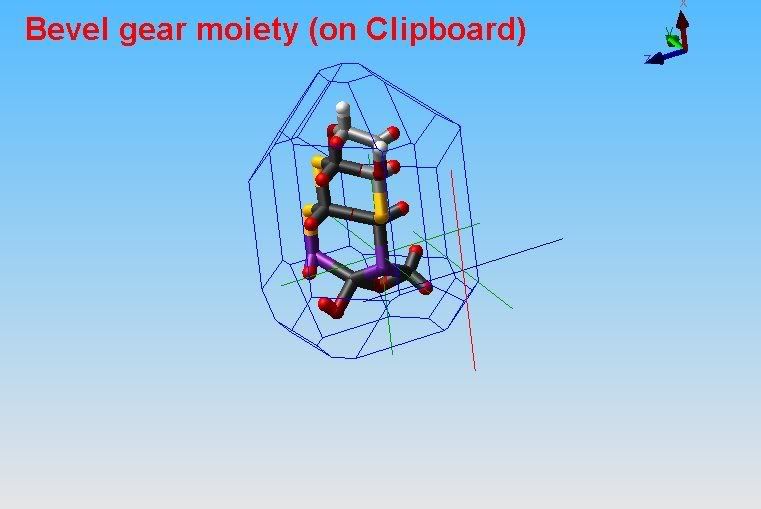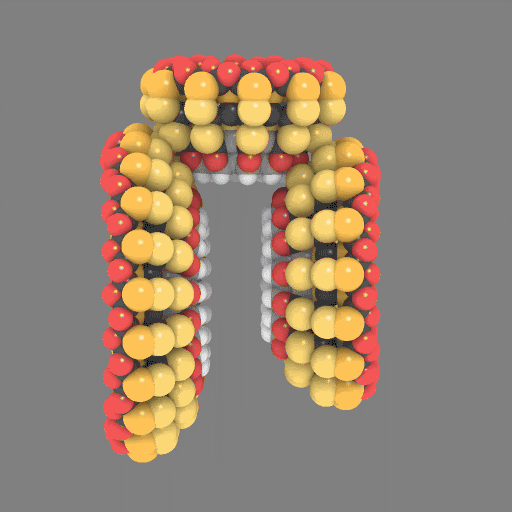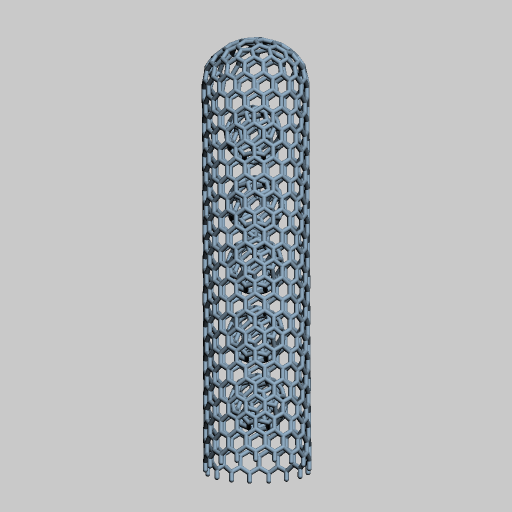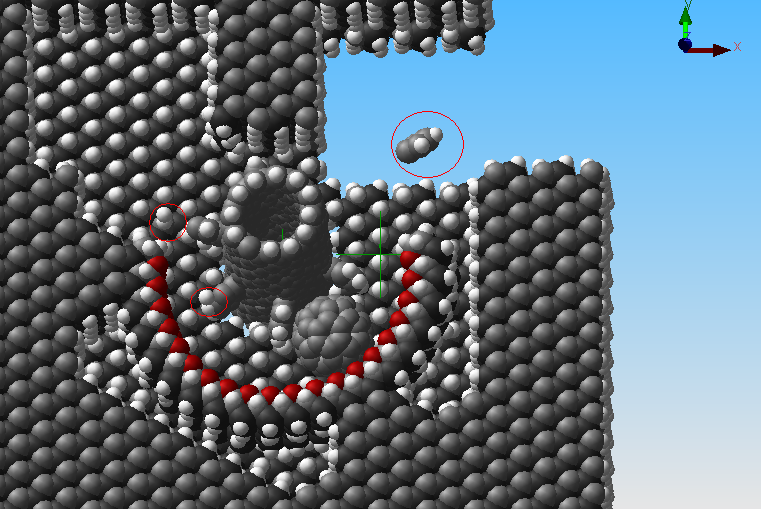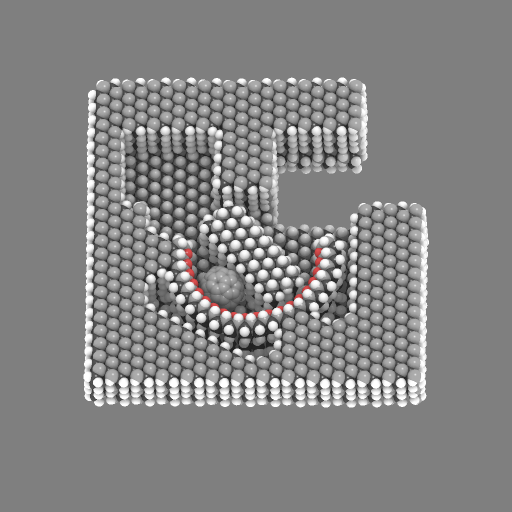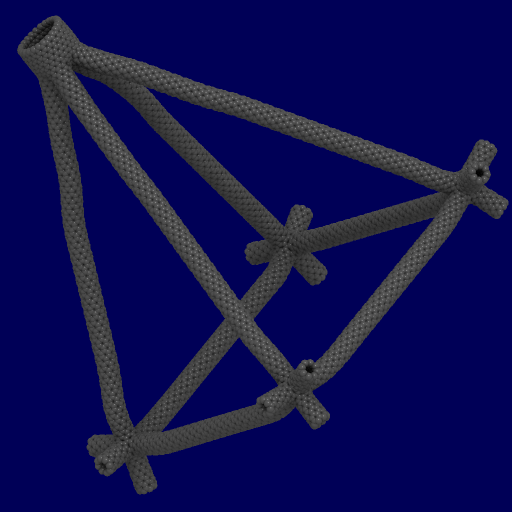
Yeah, so to clear up any lingering confusion, I am still building sections of sections, and developing more efficient ways to do it, which I have. I know this pyramid still looks a little rough, and not quite regular, but it only took a couple hours to build the whole thing opposed to a few hours for the partial one below.
Other than trying to get a really solid pyramid, I don't know how much farther I can go. This part is two atoms shy of 9,000. When I tried to join two together at the base (minus the four square beams that would be redundant) I hit the performance wall like you would not believe, total ice age. I will try again but break up the pyramid into tiny little sections (it was built in about 20 separate "chunks" but these had to be combined to paste a copy of it into the build console); I will have to break it up again and try hiding everything I am not immediately working on.
Also you can see that I swapped out the junctions at the base. The six-ways are a lot better fit and will help connecting these sections together (Jim). The four-way double ring (Moore's Junction
©), while beautiful and a triumph of geometry, probably should just be put on a pedestal*, at least for this project.
Now a couple tips when trying to build something like this:
1. Lay out the corners first and then go back and connect them. Do not (for the love of god) pick a corner and cut loose thinking you can just follow a pattern from that corner.
2. For those that are already familiar with NE1 (or soon will be) don't try to save time by using the "fuse chunks" tool. This is a feature that lets you bond a lot of atoms all at once, so, for example, you don't have to drag and bond each end atom on two tubes together. However the fuse chunks feature does just that, takes two chunks and makes them one. This doesn't help when you have to adjust the position of chunks because before when you could move two, now you can only move one. The more chunks you have, the more flexibility. Take the time to manually bond the tubes. It will save time later because you don't have to re-separate them.
*How serious do you think I am about that?

